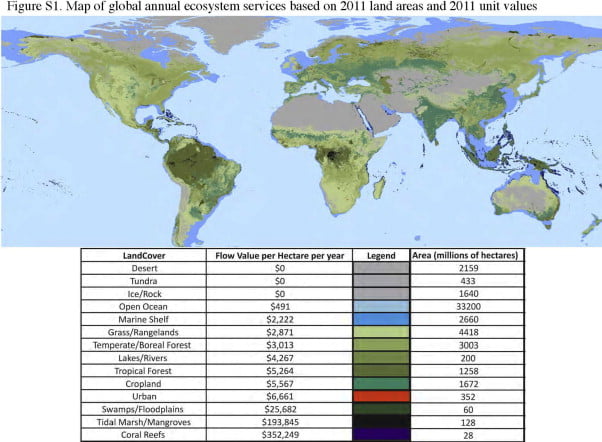The Earth is our home, and its beauty strikes awe into our hearts. Unique songs of birds filling a somber old-growth forest, the dazzling colors of a coral reef with exotic fish dashing around, massive herds of animals migrating through savannahs – all these sights have enchanted humanity for generations, making us feel part of something greater.
Yet the beauty of these examples is far from their most important aspect. These communities of diverse organisms, when looked at together with their environment, are called ecosystems. And humans depend on healthy ecosystems. We gain several services, ranging from clean air to water cycling, drought prevention and flood regulation. We rely on algae and plants to regulate the climate and provide oxygen, and on microorganisms to decompose corpses and create healthy soils. Biochemists continuously discover drugs based on natural compounds and engineers design materials with unique properties by mimicking nature. The global value of services provided by healthy ecosystems has been estimated at around US$33 trillion per year according to a 1994 peer-reviewed study. For all these reasons and more, we depend on healthy ecosystems.
One of the main pillars of ecosystem health is biodiversity. Having a diverse array of species ensures adaptability, vigor and resilience, allowing the habitat to avoid, resist and heal from damage. For example, imagine there was a single plant species on the entire planet, with no genetic variation whatsoever, feeding all the herbivores and providing all the oxygen. This would be an extremely vulnerable system: if the global climate changed too suddenly for it, or a single pathogen able to threaten it appeared, or any other number of things drove the plant to extinction, then all herbivores and by extension carnivores would starve and die, the atmosphere would shift and the lands would be barren. Biodiversity is what prevents this bleak scenario from happening. Species go extinct as conditions change, but others survive and keep carrying out the same functions.
However, human actions have put unprecedented pressure on species, both directly and indirectly. Factors such as pollution, land use change, hunting and poor agricultural practices endanger lower population numbers and restrict habitats, making species vulnerable. Thus we observe an unprecedented loss of species, estimated to be between a hundred and thousand times higher than the background extinction rate and leading some scientists to call it a sixth mass extinction. While there is debate whether the extinction rates are high enough to truly qualify for a mass extinction, there is overall agreement that its an unprecedented crisis for humanity, that its consequences are long-reaching and that humanity is the cause behind it.
How does biodiversity loss affect humans?
Simply put, a fifth of all countries are at risk of ecosystem collapse due to biodiversity loss. This would inflict unimaginable economic damage, as over half (55%) of global GDP depends on high-functioning ecosystem services. In practice, this would mean collapse of food production, dangerously low water quality, increased vulnerability to extreme weather and increased disease risk, among others.
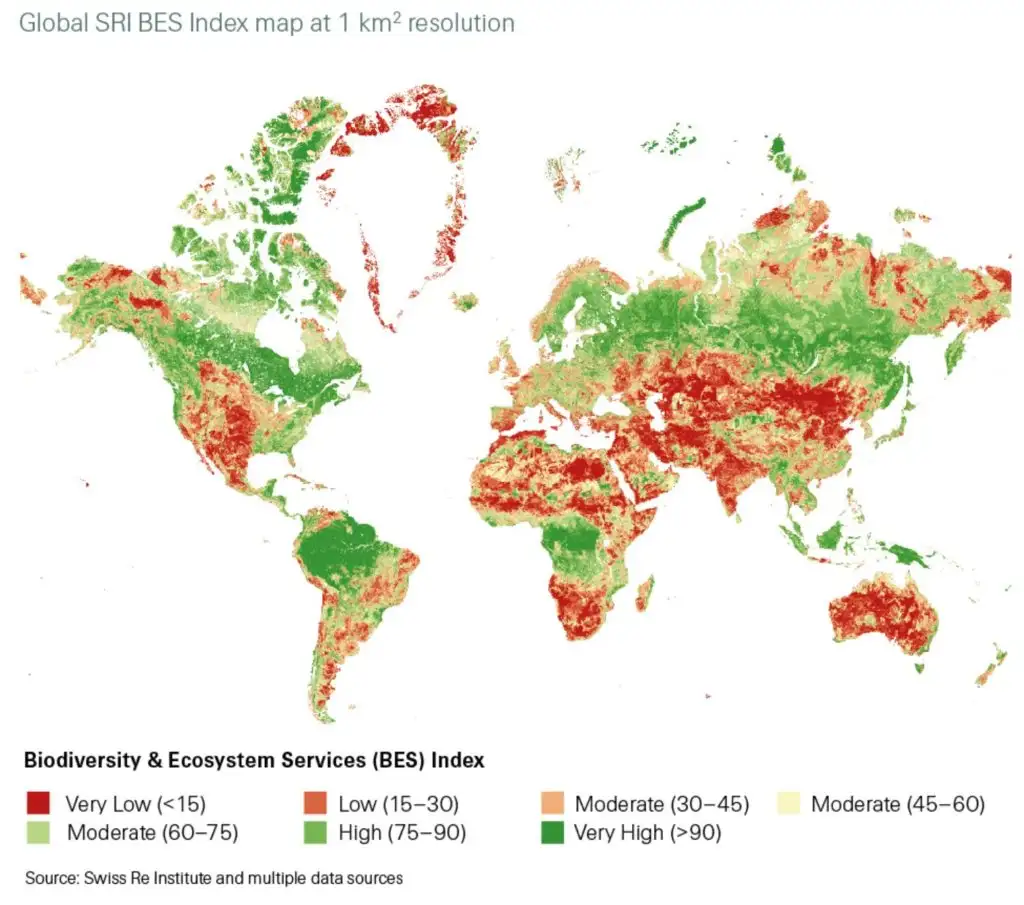
This damage deriving directly from biodiversity loss would not happen by itself – it would take place at the same time as the effects of climate change become more apparent. These conditions would give rise to a massive decrease in quality of life, and likely life expectancy, as well as spark new conflicts due to increased economic scarcity, lack of access to vital resources and mass intra- and international migration.
Moreover, these two predicaments will worsen each other in what’s called a positive feedback loop. Climate change puts additional pressure on species, especially those unable to migrate to adapt to changing conditions and those vulnerable to extreme weather, resulting in extinction. Meanwhile, biodiversity loss results in ecosystems being less able to capture and store carbon, accelerating climate change. Compounded with other issues of our time, such as ocean acidification, pollution and vulnerability to pandemics, we can no longer completely rule out a scenario of civilizational collapse and even localized human extinction due to compounding crises.
Innovations in animal conservation
While our situation is terrifying, it’s worth noting that there are alternatives to the grim future discussed so far. All over the world, scientists, politicians, entrepreneurs and activists are using their tools and resources to improve existing conservation efforts or to develop innovative methods.
One example is the EDGE of Existence programme, launched by the Zoological Society of London in 2007 to protect species that are Evolutionarily Distinct and Globally Endangered (EDGE). Due to their unique evolutionary trajectories, they are usually unique in aspect, behavior. If an animal is considered an EDGE species, it means that its extinction would leave nothing like them behind – a tremendous loss of evolutionary history and biodiversity.
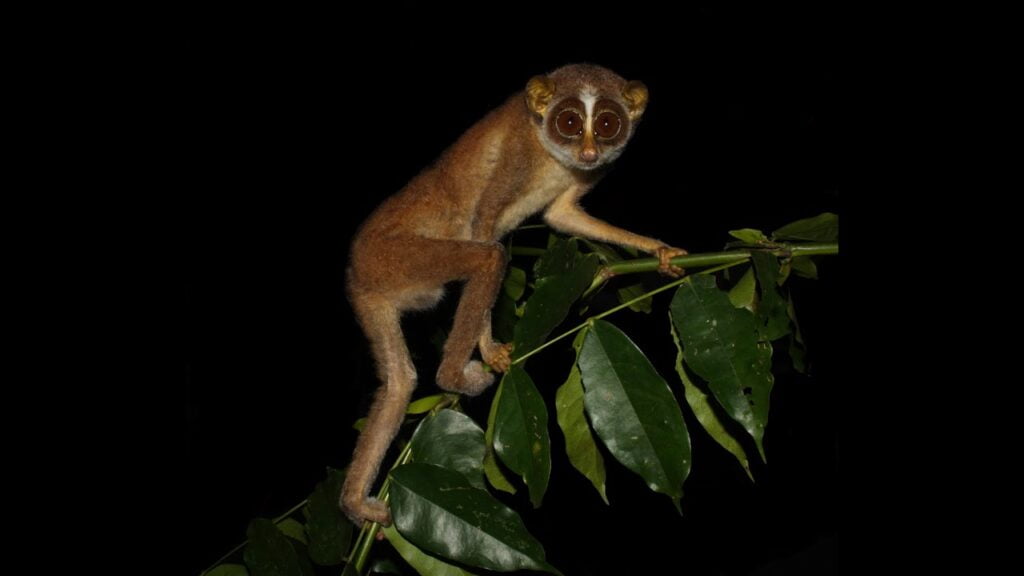
The program calculates an EDGE score for various species to decide which ones have the highest priority. Their evolutionary distinctiveness (ED) score is determined using genome analysis to look for their closest relatives in the tree of life, while their GE score is based on their conservation status according to the International Union for Conservation of Nature. Some of these species are well known and have multiple programs dedicated to their conservation, such as the elephant and pandas, but a significant proportion of them are both understudied and generally ignored by the mainstream conservation organizations. Such species include the Indian purple frog, which involved is endemic to the Western Ghats of India, lives underground its entire life except one day a year to breed and has been evolving independently for around 100 million years.
The program uses the knowledge on species granted by molecular analysis and ecological surveys (to determine their ED and GE scores) to then recruit EDGE fellows, people from all over the world with backgrounds in conservation which are trained and funded by the ZSL to protect EDGE species while also empowering local communities. For example, to raise awareness about the uniqueness and importance of the purple frog, EDGE fellow Sandeep Das has used the Onam festival, celebrated in the Indian state of Kerala. He drew a comparison between the purple frog’s underground lifestyle and the legendary king of Kerala, Mahabali, who leaves the underworld once a year. This resulted in people treasuring the frog and being more careful while driving during its mating season, as well as reducing the amount of people seeking to consume it as traditional medicine. This mix of top-notch technology, local scientists and cultural understanding makes the EDGE innovative and effective, allowing it to fund over 80 fellows all over the world and driving a new style of conservation which combines science, culture and community.
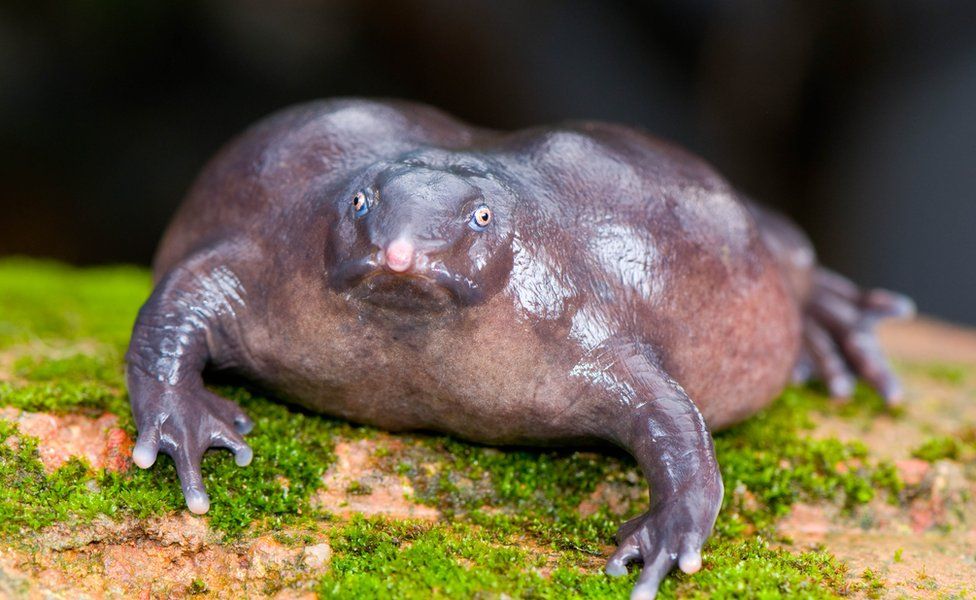
Genetics and plants: preserving biodiversity
Plant biodiversity ensures that even within the same species, there are several varieties adapted to different environmental conditions. In modern agriculture, very few species are cultivated commercially, leading to low diversity and high vulnerability. The main traits that have been selected for through crossbreeding and genetics have been mostly related to yield and growth speed, resulting in lower resistance to drought or flooding, less mechanisms of defense against pests and so on.
Due to climate change and increasing numbers of plant diseases and aggressive pests, we are beginning to recognize the value of resilience in our crops. And wild relatives provide enormous reservoirs of genetic material that can be used to alter the plant species we rely on. Modern genomic techniques allow us to look at a plant’s genetic code, analyze which genes produce desired traits, and then use this to make plants more resistant to pathogens, less reliant on fertilizers or better equipped to handle extreme weather. Many indigenous people around the world have been cultivating varieties of crops better suited for sustainable, low-input agriculture for centuries, showing us that our diets can be diverse, nutritious and tasty without destroying the planet.
One center of innovation in this field is the UK Vegetable Genebank. By drying and freezing seeds, it can store them for decades, ensuring that even if plants go extinct, their genetic information is still available to researchers. It has over 14000 species in long-term storage, including relatives of carrots, onions, cauliflowers and lettuce, from locations all over the globe.
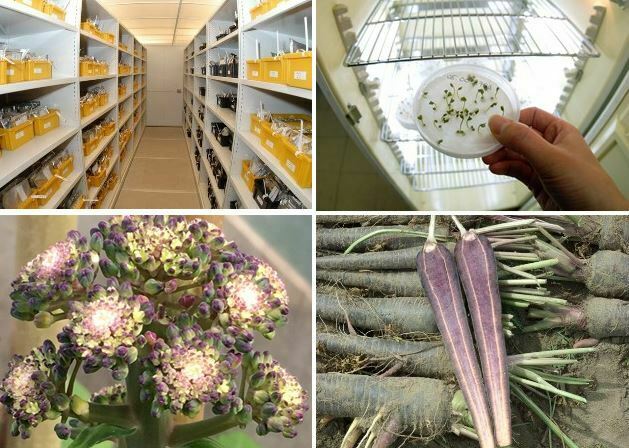
A case study focused on the fungus Fusarium oxysporum f.sp. cepae, which causes onion bulbs to rot and can cause unspeakable economic damage to vegetable farmers. Since it affects roots, its hard to target it with fungicides or other available mechanisms. Scientists used the material found in the onion diversity set, grew a diverse range of onion varieties and screened them for resistance to the fungus, identifying highly resistant lines which are now studied for potential commercial use.
Carrots are another commercially significant crop vulnerable to climate change. The UKVGB collection has carrots from all over the world, and their research team is using DNA sequencing techniques to better understand genetic diversity within and between their samples. Combined with genetic engineering technology, this will play a key part is designing the crops needed to feed humanity.
Humanity is now facing a reckoning. The consequences of our industrialized, consumerist lifestyle are piling up, destroying nature and threatening our global civilization. Biodiversity loss alone is making us unable to rely on the ecosystem services that we took for granted. However, a holistic approach combining technological innovation, social responsibility and local and ingenious knowledge can help us ensure both abundance and biodiversity for future generations.
This article was created as part of the TeaMWork program that brings together students across the globe (Monash University in Australia and Malaysia, and the University of Warwick in the United Kingdom).
Author: Andrei-Alexandru Mihail, University of Warwick


